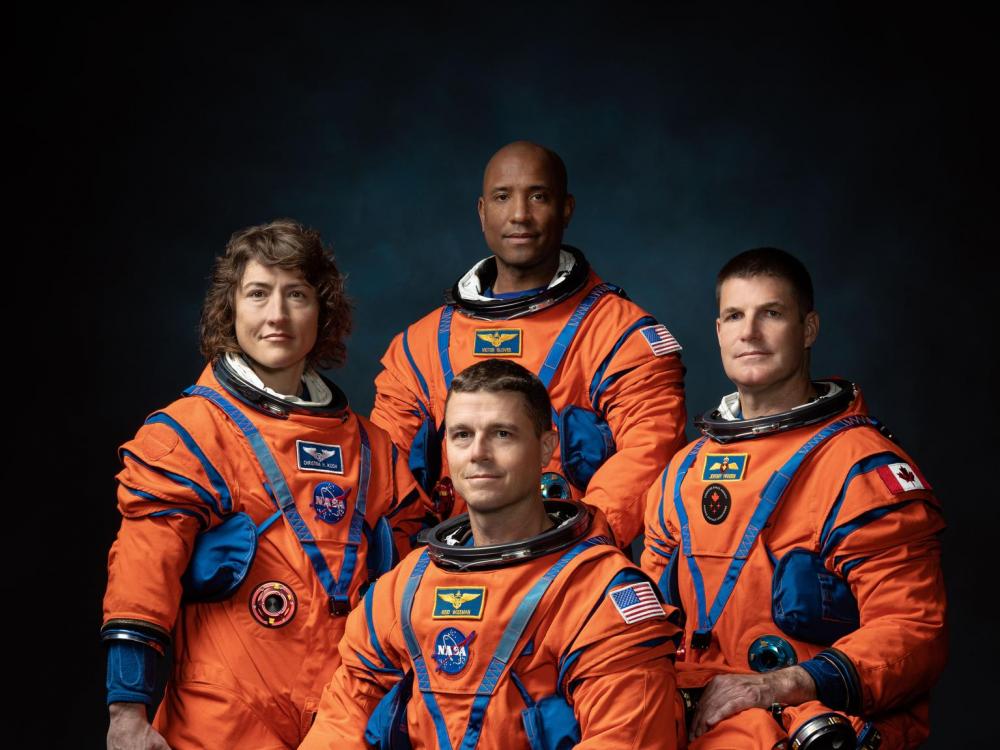For over half a century, the Moon has loomed in the night sky as both a symbol of human triumph and an unfulfilled promise. The Apollo missions left their footprints, but also unanswered questions—about what lies beyond, and what humanity’s next great leap might be. Now, with NASA’s Artemis program, we’re not just revisiting the Moon. We’re redefining our relationship with it.
Why go back? This time, it’s not just about planting flags or taking photographs. It’s about laying the foundation for humanity’s future in space. With Artemis II, a diverse team of astronauts is gearing up to embark on a journey that will push the boundaries of exploration and technology, paving the way for missions to Mars and beyond.
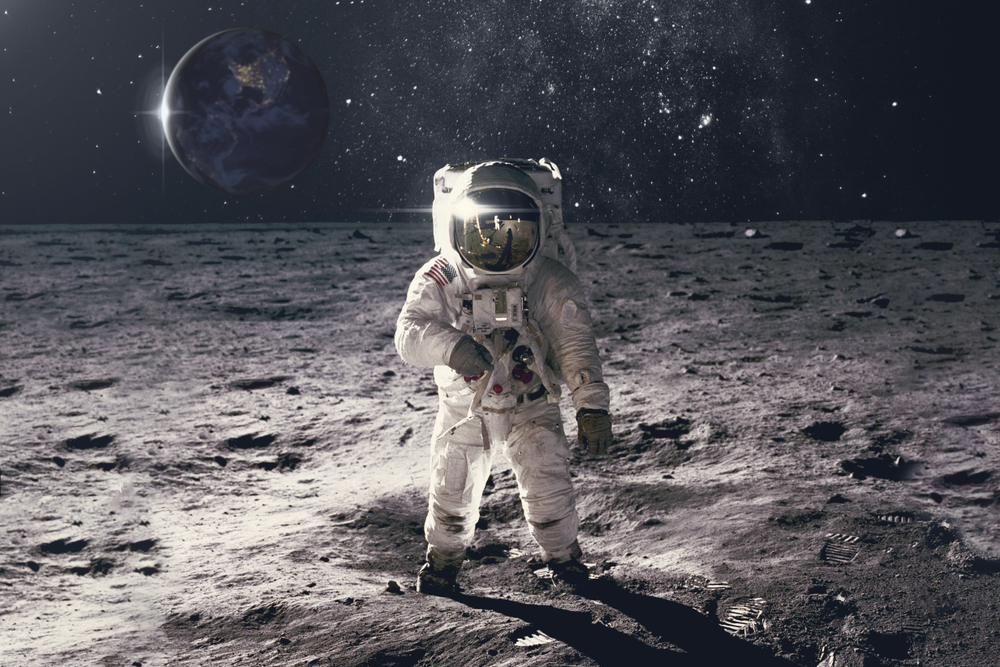
What Is Artemis II?
Artemis II represents the next pivotal step in humanity’s journey to explore deep space, serving as the first crewed mission in NASA’s Artemis program. Unlike the Apollo missions that preceded it, Artemis isn’t just about returning to the Moon—it’s about preparing for the future. This mission will orbit the Moon, testing critical systems and gathering essential data to ensure the safety and success of future lunar landings and even missions to Mars.
The spacecraft at the heart of Artemis II is the Orion capsule, powered by NASA’s Space Launch System (SLS), the most powerful rocket ever built. Together, they will carry the crew on a 10-day mission around the Moon, reaching a distance of over 230,000 miles from Earth. NASA officials describe it as “the next milestone in humanity’s quest to push farther into the solar system.”
Artemis II will provide an opportunity to demonstrate key capabilities and operations needed for humans to live and work on another world. It’s not just a technical test—it’s a statement of intent. As NASA Administrator Bill Nelson put it: “Together, we are ushering in a new era of exploration for a new generation of star sailors and dreamers – the Artemis Generation.”
The Artemis program is also groundbreaking in its inclusivity, aiming to land the first woman and the first person of color on the lunar surface. But before that can happen, Artemis II must ensure that everything is ready for Artemis III to safely achieve this historic milestone.
Meet the Crew of Artemis II
At the heart of Artemis II lies its crew—four astronauts selected to represent the pinnacle of human achievement and the collaborative spirit of space exploration. Each of them brings a wealth of experience, skills, and a unique perspective to this historic mission.

Reid Wiseman – Commander
Leading the mission is Reid Wiseman, a veteran astronaut with over 165 days in space during a previous expedition to the International Space Station (ISS). As Commander of Artemis II, Wiseman will oversee the mission’s operations, ensuring its success. “For me, the thing that I like the most about Artemis is that we are going to the Moon and on to Mars, but we are also going as an international team and as a public-private partnership team,” Wiseman says about NASA’s current program.
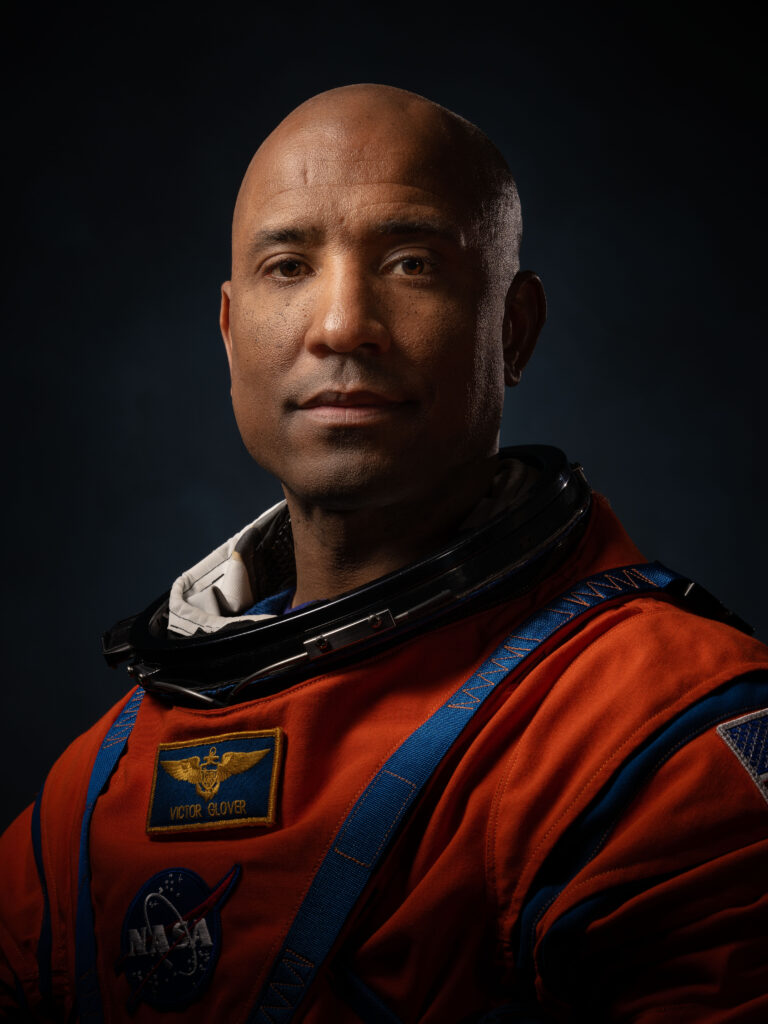
Victor Glover – Pilot
Making history as the first person of color to travel to the Moon, Victor Glover serves as the pilot of Artemis II. Glover previously spent 168 days aboard the ISS and contributed to multiple spacewalks. On his role in the mission, Glover remarks, “I’m wearing an American flag, but when I leave the planet, I represent Earth, you represent humanity, and I really take that seriously. We all have a duty to represent humanity.”
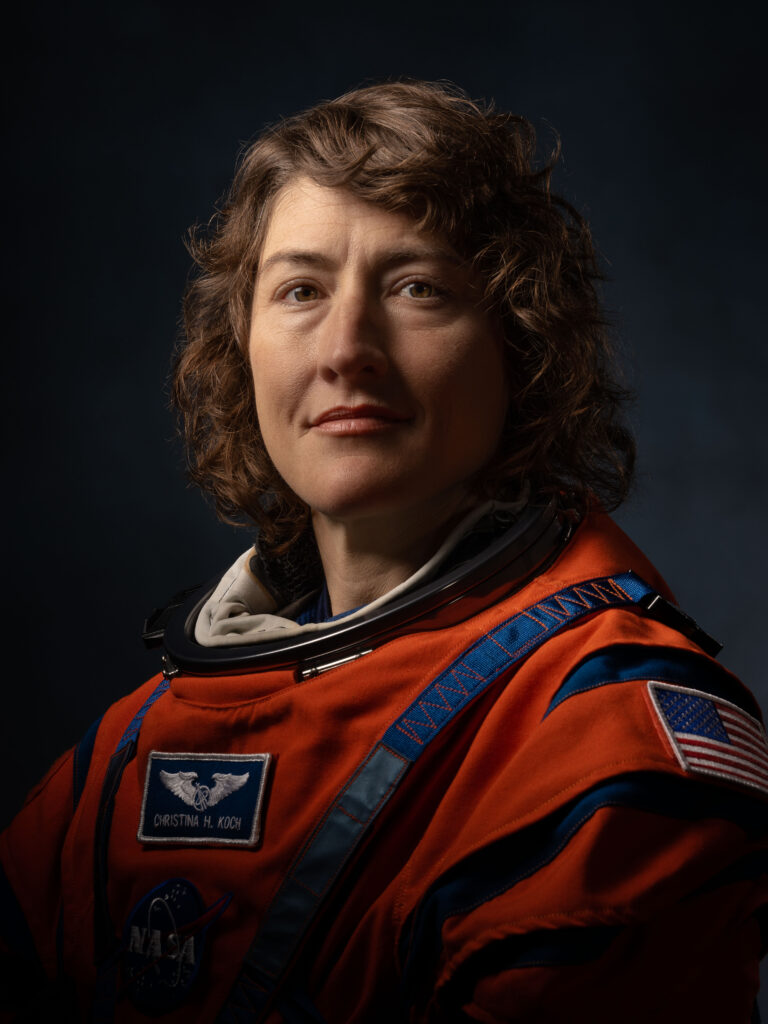
Christina Koch – Mission Specialist
Christina Koch is no stranger to breaking barriers. She holds the record for the longest single spaceflight by a woman, spending 328 days in orbit during her time aboard the ISS. As a mission specialist, Koch will bring her expertise in engineering and space operations to Artemis II. “I’m happy to say that long ago, NASA made the decision that it was important to represent all of humanity when we answer humanity’s call to explore,” Koch said about her historic selection. We understand that the best way to be successful is to make sure that everyone with a contribution and a talent is part of the team.”

Jeremy Hansen – Mission Specialist
Representing the Canadian Space Agency (CSA), Jeremy Hansen becomes the first Canadian astronaut to venture beyond low Earth orbit. His inclusion highlights the international collaboration fueling the Artemis program. Hansen, a former fighter pilot, shared his excitement, saying, “I’m really proud of this enormous team. I get to be the face of it for this mission, but it really reflects back on a huge team of people that made this possible.”
Together, these four astronauts symbolize the ambition, courage, and diversity of the Artemis program. Their mission is not just to orbit the Moon but to inspire a generation to dream bigger and reach farther than ever before.
The Goals and Vision of Artemis II
With its primary goal of conducting a 10-day crewed lunar flyby, the mission serves as a crucial stepping stone for NASA’s long-term vision of sustainable exploration on the Moon and beyond. It’s the bridge between testing uncrewed systems in Artemis I and achieving a historic lunar landing in Artemis III.
The mission will focus on validating the life-support systems and performance of the Orion spacecraft in a deep-space environment. These tests are vital to ensuring the safety of future astronauts who will eventually live and work on the lunar surface.
Beyond the technical achievements, Artemis II has a broader purpose: advancing scientific discovery and inspiring a new generation of explorers. As part of its objectives, the Artemis program aims to establish a sustainable presence on the Moon by the end of the decade. This includes constructing the Lunar Gateway, a space station that will orbit the Moon and act as a hub for research and exploration.
By combining cutting-edge technology with a bold vision for the future, Artemis II is laying the groundwork for a new era of exploration. It’s a mission that doesn’t just look to the Moon but far beyond—toward a future where humanity’s reach truly knows no bounds.
The Technology Powering Artemis II
Artemis II stands as a showcase of cutting-edge technology, blending decades of engineering advancements with new innovations designed to push the boundaries of human exploration. At the heart of the mission are the Orion spacecraft and the Space Launch System (SLS), two groundbreaking systems that make Artemis II possible.
The Orion spacecraft serves as the astronauts’ home for the duration of the mission. Designed to withstand the harsh environment of deep space, Orion is equipped with advanced life-support systems, radiation shielding, and navigation technologies. Its European-built Service Module (ESM) supplies propulsion, electricity, and vital resources such as water and oxygen.
Complementing Orion is the Space Launch System (SLS), NASA’s most powerful rocket ever built. Towering at 322 feet, the SLS generates a staggering 8.8 million pounds of thrust, enough to propel the crew on their journey to the Moon. NASA officials describe it as the backbone of the Artemis program, designed to take us deeper into space than ever before. The rocket’s performance during Artemis I demonstrated its capability, clearing the way for its crewed debut in Artemis II.
Another key innovation supporting Artemis II is the Launch Abort System (LAS), which ensures the astronauts’ safety in the event of an emergency during launch. This system, mounted atop the Orion spacecraft, can pull the crew to safety within milliseconds, showcasing the program’s commitment to prioritizing human life.
Together, these technologies represent the pinnacle of human ingenuity. They are not only enabling the Artemis II mission but are also laying the foundation for future lunar landings and interplanetary travel. Artemis II serves as a blueprint for the future of space exploration, showing what’s possible when ambition meets cutting-edge technology.
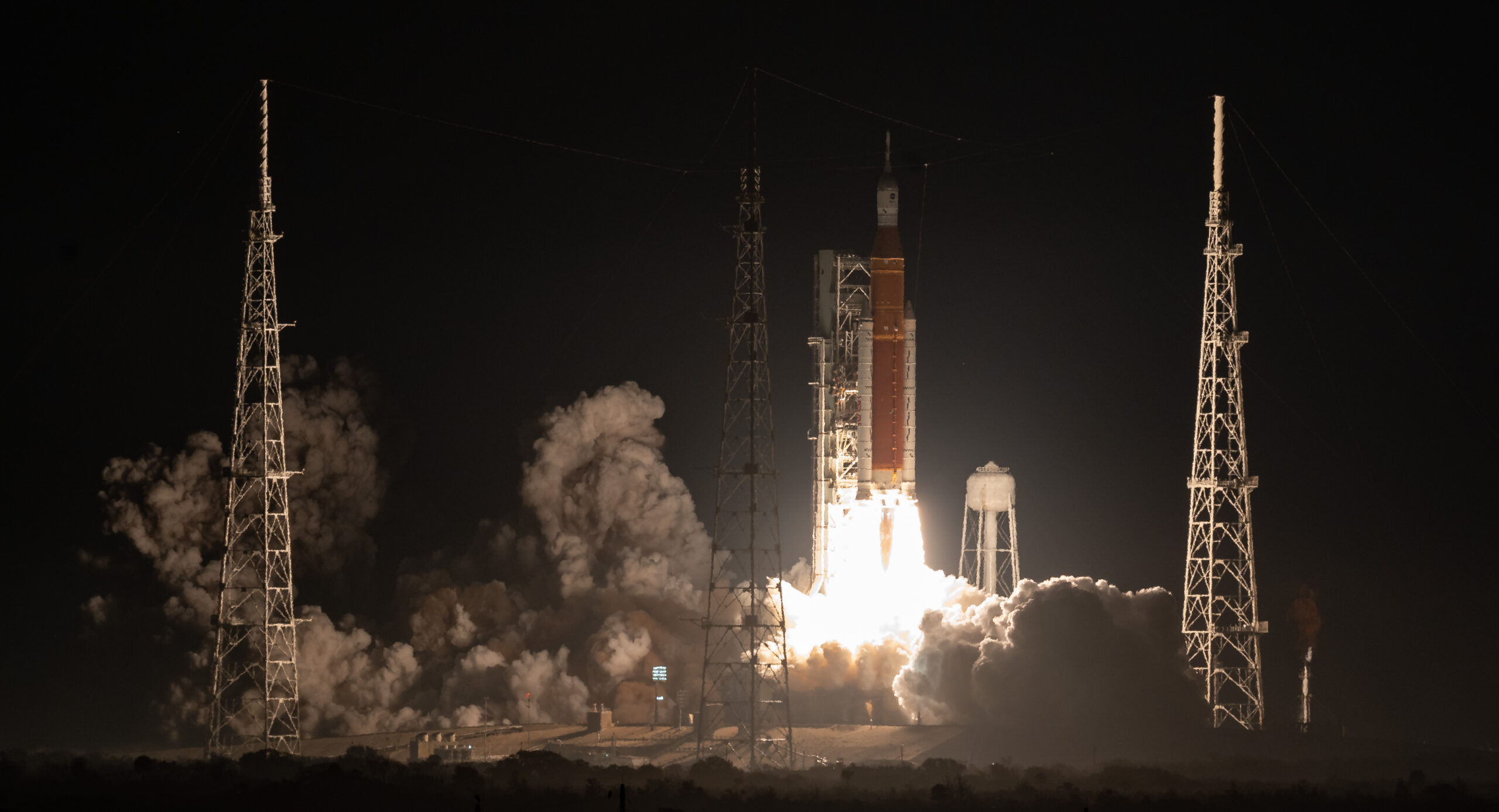
The Global Collaboration Driving Artemis II
Artemis II showcases the power of international collaboration, with space agencies from around the world joining forces to make this historic mission possible. While NASA leads the charge, the inclusion of the Canadian Space Agency (CSA) and the European Space Agency (ESA) highlights how humanity’s reach into the cosmos is a shared endeavor.
One of the most symbolic aspects of this collaboration is the participation of Jeremy Hansen, the Canadian astronaut who will become the first non-American to venture beyond low Earth orbit. Canada’s contribution to Artemis includes the development of Canadarm3, an advanced robotic system that will be used on the Lunar Gateway. Hansen reflected on the significance of his role, saying, “It’s Canada on the world stage. American leadership makes space for a country like Canada to shine, and bring our genius.”
The European Space Agency has also played a pivotal role, supplying the European Service Module (ESM), which powers and propels the Orion spacecraft. The ESM provides air, water, and electricity for the astronauts, making it an indispensable part of the mission. The European Service Module is at the heart of this mission, emphasizing its role as a foundation for future human exploration.
This spirit of global cooperation is central to the Artemis program’s vision of inclusivity and shared progress. NASA Johnson Director Vanessa Wyche stated, “This mission paves the way for the expansion of human deep space exploration and presents new opportunities for scientific discoveries, commercial, industry and academic partnerships and the Artemis Generation.”
Featured image from NASA

